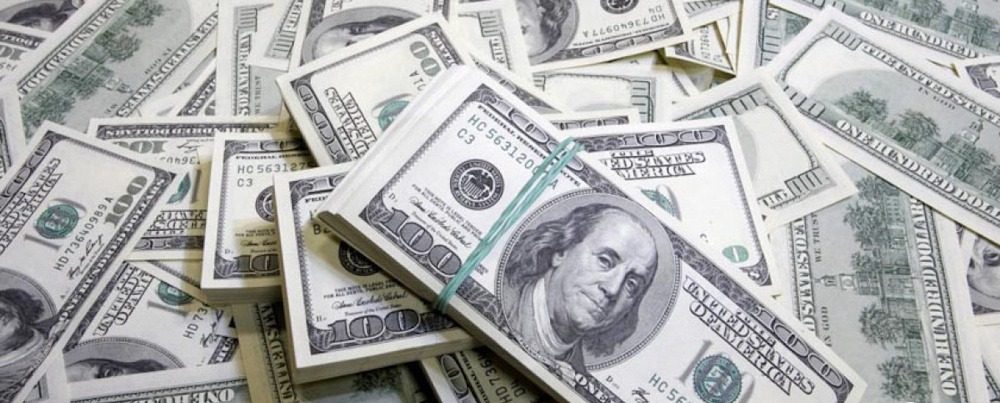
The US dollar is predominantly exhibiting a narrow mix against the G10 currencies. The Japanese yen stands out as the significant exception. The major currencies are influenced by a gain of approximately 0.35%, while the dollar has declined to a four-day low close to JPY156, following a peak last week just below JPY158. The dollar-bloc currencies, alongside the Swiss franc and Swedish krona, are experiencing minor declines. As the likelihood of a Fed cut next month increases, emerging market currencies have seen a rise in demand. There are a few minor exceptions, including the Russian ruble, which has declined by nearly 0.6%.
US stocks continued their recovery from the previous week, with the S&P 500 achieving its most significant increase in just over a month at 1.55%. However, the subsequent impact in the Asia Pacific region was varied. Japanese markets, resuming activity after the extended holiday weekend, displayed a mixed performance. The markets in China, Hong Kong, Taiwan, South Korea, and Australia experienced an upward movement. Most of the others did not. Europe’s Stoxx 600 is holding steady, hovering around unchanged levels in late morning trading. US index futures are slightly lower, down approximately 0.10 to 0.25 percent. The benchmark 10-year yield increased by 2.5 basis points in Tokyo, reaching approximately 1.80%. The peak observed last week, approaching 1.85%, marked the highest level since 2008. European yields are generally showing slight softness, with UK and French yields experiencing a decline of just over a basis point. The 10-year Treasury yield decreased from approximately 4.16% last Thursday to nearly 4.02% yesterday. This month, it has maintained a position above 4.0%, with the market appearing reluctant to push it below that threshold. The yield currently stands at approximately 4.03%. Gold achieved a seven-day peak close to $4156 earlier today; however, it is facing challenges in maintaining the upward momentum. The session low was noted at just under $4110 as European markets commenced, with buyers stepping in to elevate the yellow metal back to $4140. January WTI is currently stabilizing at the higher end of yesterday’s range, yet it remains below $59 as of today.
Today marks the fourth consecutive session in which the Dollar Index remains within a tight range of approximately 100.00 to 100.40. This marks the second session in which it has remained below 100.30. A breach of 99.80 or 100.50 is required to indicate the conclusion of the consolidative phase that commenced in the latter part of last week. The release of September retail sales and PPI today may present some headline risk; however, it is not expected to significantly influence expectations for the Fed’s upcoming meeting next month. The labor market is regarded as crucial by numerous officials. Retail sales are projected to increase by 0.4%, based on the median forecast from Bloomberg’s survey. However, the outlook appears to lean towards the downside, considering the significant decline in October auto sales, marking the largest drop in five months and the slowest performance since August 2024. Producer prices appear relatively stable compared to August, when they experienced a 2.6% increase at the headline level and a 2.8% rise at the core level. Residential property values seem to have experienced a slight increase. The Conference Board’s measure of consumer confidence for November is anticipated to have declined.
A line from the early August low (~$1.1400) and the early November low ($1.1470) intersected with the low from the end of last week (~$1.1490). Today, that trendline is positioned around $1.1485. A resistance zone is identified between approximately $1.1555 and $1.1575, and surpassing this range would enhance the technical outlook. The key data point to watch this week is the release of national CPI figures for November from the four largest eurozone members, with the overall estimate set to be published next week on December 2. Meanwhile, three Italian states conducted gubernatorial elections over the course of Sunday and Monday. The current governors seem to have secured victories in every state. The center-left faces significant challenges in opposing Meloni’s center-right coalition. However, within the coalition, the League lagged behind Meloni’s Brothers of Italy, which may result in a diminished influence for its leader (Salvini), following the setback of one of his initiatives (bridge to Sicily).
The Australian dollar continues to exhibit fragility. The rally leading up to the weekend, which started close to a three-month low (~$0.6420), encountered resistance around $0.6470 yesterday, falling short of the (38.2%) retracement of the downward movement that commenced on November 13 near $0.6580. It has remained under $0.6470 thus far today, coming within 1/100 of a cent of that level. Initial support around $0.6440 was maintained in Europe and North America yesterday, and it has barely traded below $0.6450 today. Australia is set to release the Consumer Price Index for October tomorrow. The headline is projected to strengthen to 3.6% (up from 3.5%), while the core is anticipated to rise to 2.9% from 2.8%. The futures market has relinquished earlier expectations of a rate cut in the upcoming month. The peak odds recorded this month reached approximately 27% during the initial week, whereas the current figure stands at about 7%. The Reserve Bank of New Zealand is anticipated to implement a 25 basis point reduction first thing tomorrow, adjusting its cash target rate to 2.25%. According to a survey, one does not expect a reduction, while two predict a 50 basis point decrease. The remaining 21 indicate a quarter-point reduction. The swaps market indicates a terminal rate ranging from 2% to 2.25%.
